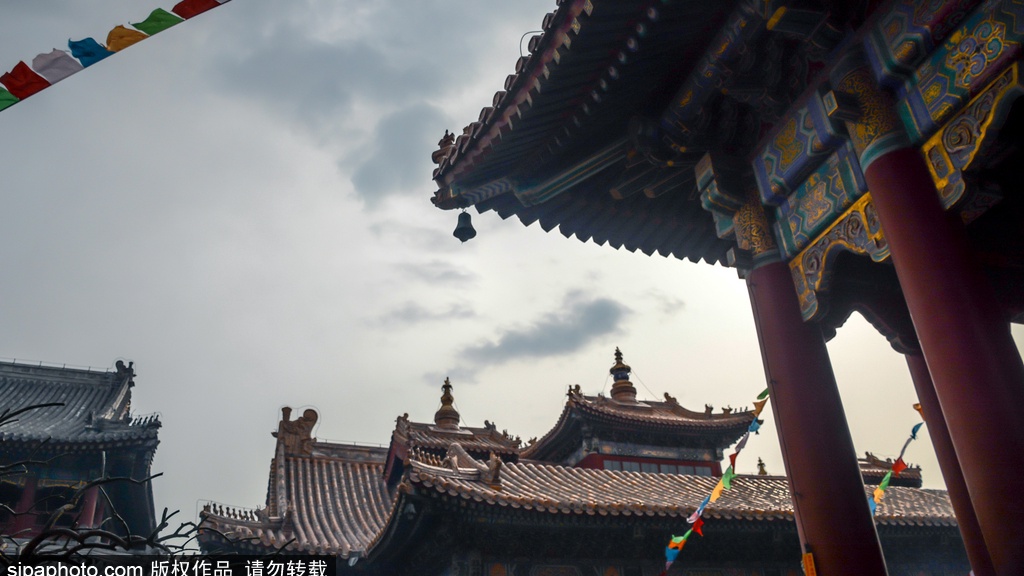
The Lama Temple faces south, covering an area of 6.6 hectares. Rumor has it that Lama Temple possesses 661 rooms in total, among which 238 are Buddhist halls. The yellow tiles and vermilion walls resemble the palaces in the Forbidden City. The architectural style is impressive, integrating the characteristics of Han nationality, Manchu and Mongoliannationality. The whole temple is divided into three parts: east, central and west.The central part comprises seven yards and five halls, which is the main structure on the central axis, and it is flanked by side halls and side buildings.
There are five main halls: Hall of Heavenly Kings (Tianwangdian), the Hall of Harmony and Peace (Yonghegong), the Hall of Everlasting Protection (Yongyoudian), the Hall of the Wheel of the Law (Falundian), and the Pavilion of Ten Thousand Happinesses (Wanfuge), and it is flanked by two halls on the east side and the west side. Also, there are Sixue Halls: Jiangjing Hall, Mizong Hall, Shuxue Hall, and Yaoshi Hall. The buildings’ area is reduced from the south to the north, while the height is elevated.
Emperor Yongzheng once lived here, and it’s also the birthplace of Emperor Qianlong. Therefore, The Lama Temple is deemed as a lucky place that it’s often crowded with people. Whenever there is a festival, a continuous stream of visitors come here to beg blessings of Buddha. On every 1st of lunar January before dawn, the monks will chant sutras until the morning. Outside the Lama Temple, people will queue up to scramble for the first incense, wishing for good luck in the coming year.
Address: No. 12 Yonghe Temple Street, Dongcheng District, Beijing 北京市东城区雍和宫大街12号



